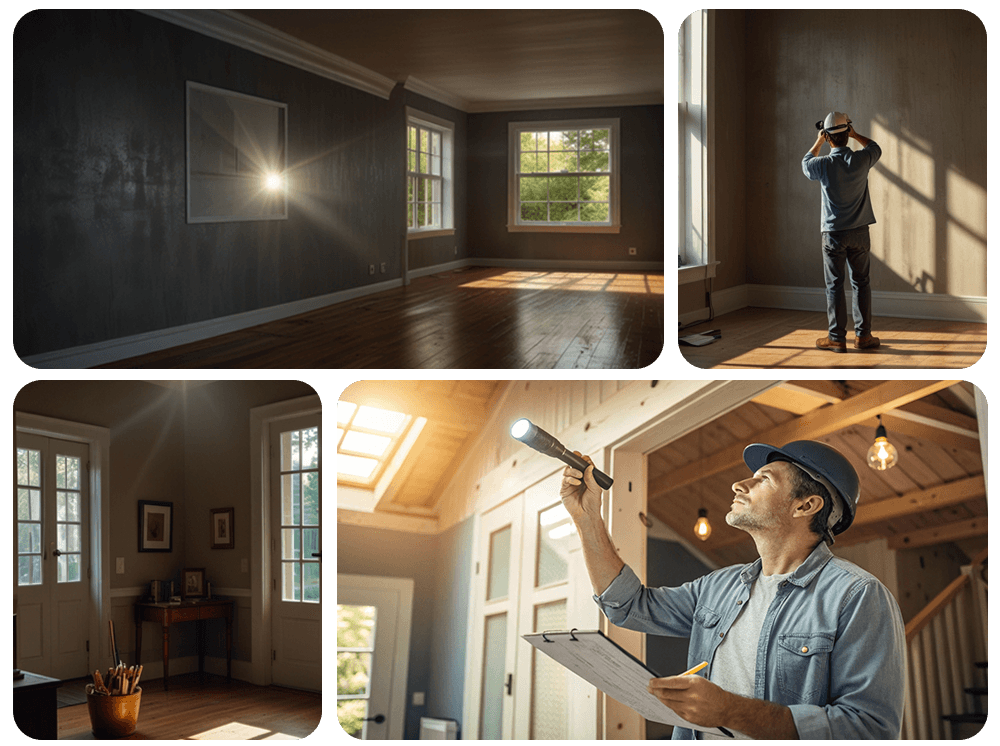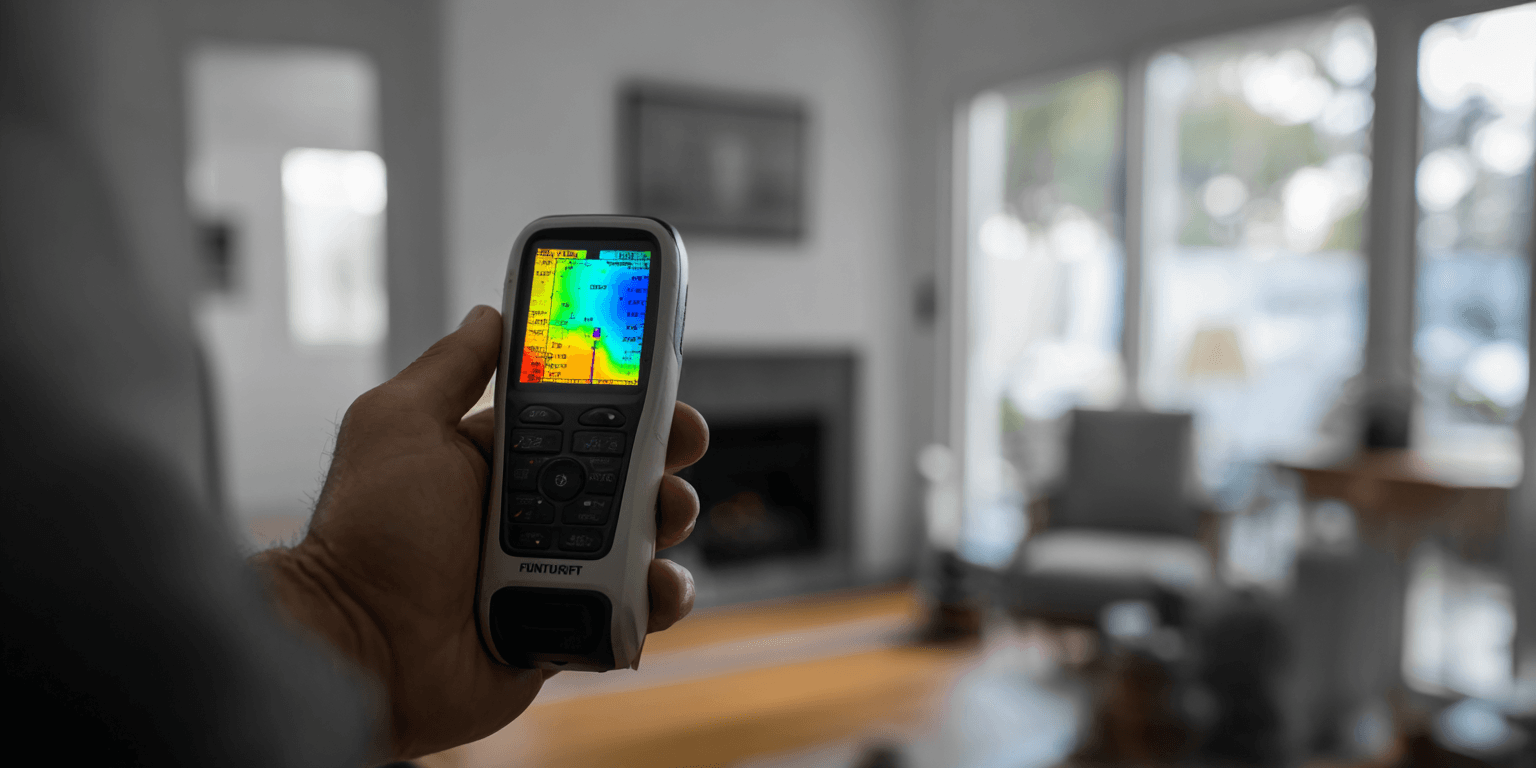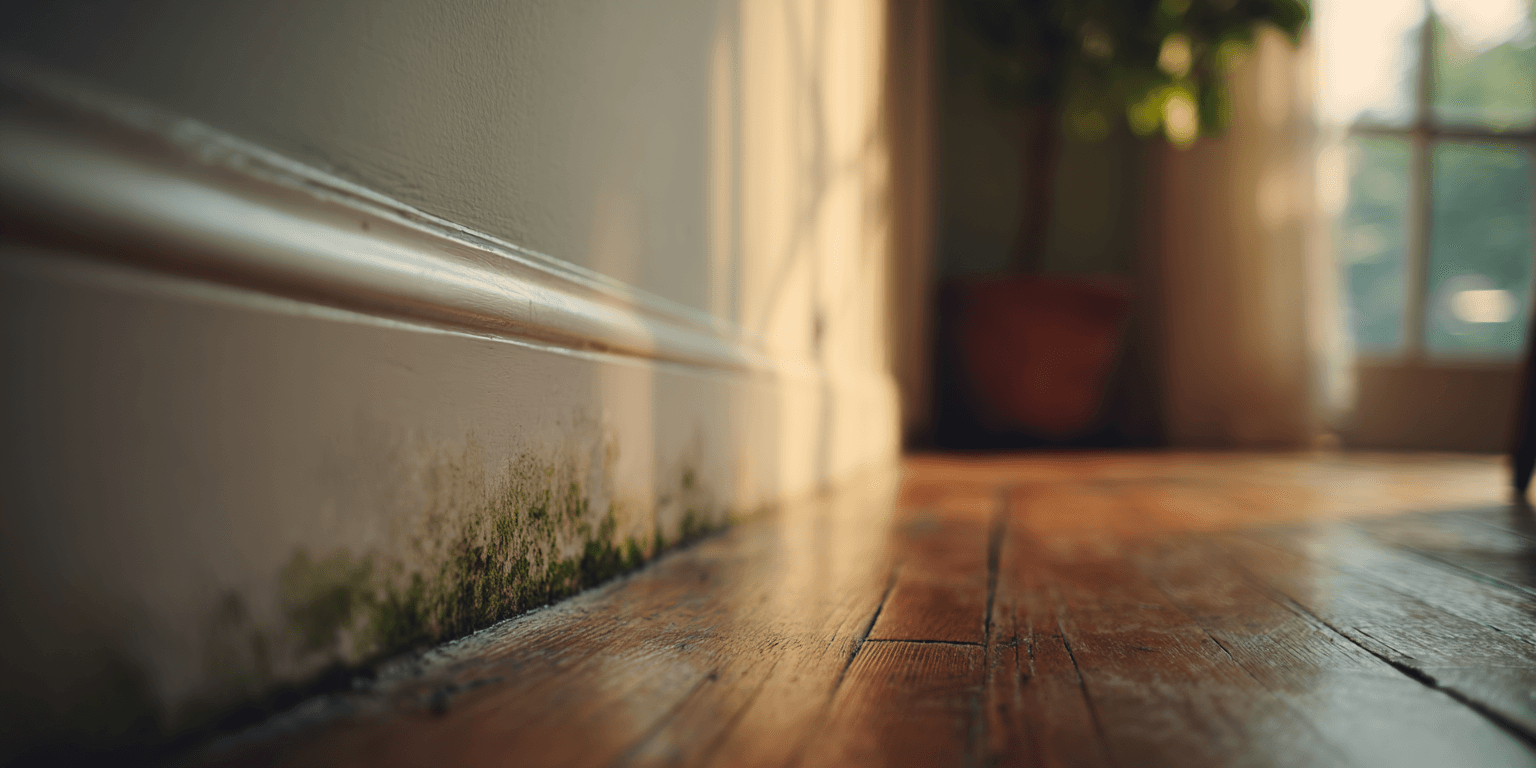Severe storms are known for leaving a big mess behind—damaged roofs, broken windows, and soaked floors can all be easy to spot and fix. But sometimes, what you can’t see right away can hurt your home the most. Storms have a sneaky way of forcing water into just about any crack or seam in your house. High winds, heavy rain, hail, and flying debris can all damage the exterior of your house, creating hidden weaknesses that let moisture get inside. This water intrusion can compromise the strength, safety, and comfort of your home even before the damage is noticeable.

Mold needs moisture to grow, and storm damage provides just the right condition for that to happen fast. If a storm damages your roof or siding, water may trickle down inside walls or beneath floorboards. Windows and attic vents are also common leak spots, especially if seals are cracked or the storm’s impact shook the structure. Sometimes even a tiny weakness—one missing shingle or a hairline foundation crack—gives water a new path inside.
Once water gets in, it often hides. Insulation in attic spaces, the back side of drywall, and even crawl spaces under your house become places water can linger for days or weeks. These spots don’t dry out easily, creating a cozy place for mold spores to settle and multiply. Mold can start growing less than 48 hours after moisture appears, and it will keep growing as long as the area stays damp. You might not see anything at first, but that doesn’t mean mold isn’t there.
Because these problem areas are often hidden away, it takes a thorough inspection—using special tools and a trained eye—to find moisture hotspots after a big storm. Inspectors check these spaces carefully, using moisture meters and sometimes thermal cameras to catch signs of dampness that could otherwise go unnoticed.
After a major storm, most homeowners naturally focus on fixing what's clearly damaged. You might patch the roof, vacuum up water, or air out the basement. But as you clean up, it’s important to remember that mold doesn’t always make its presence obvious right away. The first signs can be subtle—new musty or unpleasant odors, for example, or allergy symptoms that suddenly get worse.
Mold can cause a smell that is earthy, musty, or like rotting leaves. If you walk into a room and notice a lingering, sour smell—even after everything looks dry—it could be mold taking root in hidden places. Pay attention to how your home and family feel when you return after a storm. Some people in your household might start to sneeze more, complain of itchy eyes, or feel like their asthma or allergies are suddenly acting up. These symptoms are often clues that mold spores are in the air, especially if the only change since feeling healthy is recent water damage.
Check dark, damp places—the basement or attic, closets, the corners of seldom-used rooms, or around windows. Bathrooms and kitchens are high-risk too, simply because plumbing leaks or blown-out ventilation fans leave moisture behind. Watch for water stains, warped drywall, peeling wallpaper, or spots that look discolored. Even if the spots seem small or just on the surface, mold could still be growing deeper inside the walls or under the floor.
And remember: mold acts fast. It can settle in within two days of water exposure and expand its territory quickly if it’s not addressed. The less visible the damage, the more dangerous mold can become, spreading to other rooms, hidden spaces, and eventually your HVAC system—circulating contaminated air throughout your home.

Many people assume once the water dries, the risks are gone. Unfortunately, that’s not always true. The real danger often begins after the cleanup, when moisture lingers in hidden corners of your home. That’s why it’s so important to get a professional mold inspection after any major storm event. Inspections are designed to look for what you might miss, using special equipment and careful observation.
A good inspection starts with a thorough look at the parts of your house most likely to be affected by a storm—crawlspaces and basements, attics, around window and door frames, and any place where water could get trapped. Inspectors don’t just look for obvious mold; they also watch for smaller clues like water stains, soft spots in the drywall, musty odors, or warped flooring.
But the real value in these inspections comes from their use of advanced tools. Moisture meters can measure the wetness in wood, drywall, or insulation—even if these materials look dry on the outside. Meanwhile, thermal imaging cameras reveal subtle changes in surface temperature, showing where dampness might be lurking behind a wall. Air sampling and lab testing can tell if elevated mold spore levels are present somewhere in your home, even before mold spots appear.
When the inspection ends, you get a detailed report. This isn’t just a checklist. The report identifies where water or mold was found, explains the risks and what type of remediation is needed, and suggests practical fixes like better roof flashing, improved basement waterproofing, or more robust attic ventilation. This road map makes it easier and safer to restore your home and avoid future problems.

A detailed inspection often uncovers trouble spots homeowners never knew existed. Areas like basements and crawlspaces are magnets for lingering moisture. Storm-driven rain and wind push water under roof shingles, letting it pool in attic insulation or along exposed rafters. Sometimes, even the tiniest roof leak can create a pocket of moisture that sticks around for weeks, fueling mold where you’d least expect it.
Windowsills and doors often go unnoticed, especially after a quick mop-up job. If seals were damaged by hail or wind, stormwater can collect inside the frames and under the flooring. Inspectors might find burst or backed-up pipes caused by storm surges or debris, which create pockets of dampness inside kitchen and bathroom cabinets or behind the walls.
The point of a mold inspection after a storm isn’t just to find existing problems—it’s also to help prevent future ones. For example, if your inspection reveals that your foundation has cracks or the yard slopes toward your house, targeted repairs stop water from getting in next time. Routine maintenance checks on gutters, ensuring downspouts direct water away from the house, and improving attic or crawlspace ventilation are all smart prevention steps.
By acting quickly and relying on a thorough inspection, you turn a potentially expensive headache into a manageable home maintenance task. Early intervention lets you target treatment to the places mold is actually growing, instead of wasting time and money trying to fix every nook and cranny.
The hours and days after a storm matter most. The quicker you act, the better your chances of stopping mold before it becomes a long-term and expensive threat. Mold begins growing within 24–48 hours of water being present, and even minor delays can give it a head start.
As soon as it’s safe, have a professional come in for a mold inspection after the storm. Inspectors are trained to look far beyond what’s obvious, finding wet spots in walls, floors, the attic, and especially out-of-sight crawlspaces. They can check for visual clues but also use tools that homeowners don’t have—moisture meters, thermal cameras, and humidity gauges.
Taking this proactive approach is your best defense. Clearing gutters and downspouts, repairing missing roof shingles, fixing damaged window seals, and using dehumidifiers or fans can make a big difference. After each big storm, remove standing water as soon as possible, open windows to let air circulate, and focus on keeping interior moisture levels low, especially in basements.
You don’t need to wait for visible mold or strong odors to act. The safest option is to get a post-storm inspection every time your house is exposed to heavy rain or flooding—no matter how dry things appear on the surface.
Not every sign of storm damage is easy to spot. Water can seep deeply into the fabric of your home, especially if roofing materials or siding are seriously compromised. Floodwaters are particularly dangerous because they don’t just disappear—they’re absorbed by walls, flooring, insulation, and the very bones of the house.
Mold needs three things to thrive: moisture, warmth, and food. After a storm, moisture is everywhere, warmth is common inside your house, and food is abundant—paint, wallpaper, carpet, insulation, even wooden framing. In many cases, homeowners don’t realize there’s a problem until they notice a musty smell, peeling paint, or the appearance of dark patches in the corners of the rooms.
Attics, basements, and crawlspaces are at the highest risk. Moisture here is very slow to dry, given poor airflow and lots of absorbent material. Areas behind insulation or under vinyl flooring are also prime mold habitats after flooding. Even if the weather turns dry, water trapped inside walls takes much longer to evaporate, giving mold plenty of time to get established.
That’s why a mold inspection after a storm is so important—it finds the things you can’t see, helping you stop mold in its tracks before it becomes a real threat to your family’s health and safety.
While it’s tempting to breathe easy when the skies clear, the real danger often comes later, as hidden moisture quietly triggers mold behind the walls or under the floors. Quick action is your best defense; mold can start growing almost right away, and waiting just a few extra days can turn a little moisture problem into a big, costly cleanup job.
A post-storm mold inspection isn’t just for peace of mind—it’s a crucial investment in your property. A certified inspector uses a trained eye and specialized tools to check every part of your home, including spots that homeowners often skip. Any moisture left behind can start a chain reaction that costs ten times more to fix if left undetected.
When you hire a pro for a post-storm inspection, you get more than just a walkthrough. You receive a solid, written report outlining any issues, giving you a road map for repairs and documentation for insurance or future reference. This step not only prevents bigger problems but also protects your family from the allergies, asthma, or illnesses that mold exposure can trigger.
A storm can cause many types of damage, some easy to see and some completely hidden from view. Inspectors are trained to look for the smallest signs of trouble. Discoloration on ceilings or walls, whether it’s black, green, or even white, might be a clue that mold has already started to grow. A musty smell, particularly in closed-off or humid spaces, is another strong warning sign.
Bubbling paint, warped flooring, or sagging drywall often tell a more serious story—water is still trapped behind the surface. Inspectors measure how damp materials are with moisture meters and use thermal imaging to scan for temperature changes that reveal hidden wet spots. Even in rooms that look normal, persistent condensation on windows or pipes hints at high humidity—a risk factor for future mold growth.
In some cases, air and surface tests are used, capturing samples to pinpoint not only whether mold is present, but how much and what kind. This allows the inspector to decide if a spot needs a simple cleanup or if the problem is more complex, needing deeper remediation.
Professional inspectors have a sharp eye for the difference between cosmetic stains and real dangers. Not every speck of mold means disaster, but seeing mold inside walls, under floors, or connected to HVAC systems is usually a sign of a serious hidden issue. Trust experience—trained inspectors make sure repairs and remediation focus where they’re needed most.
Each storm gives you the chance to fine-tune your home’s defenses against water and mold. Start simple: when the weather clears and it’s safe, remove any standing water quickly, no matter how small the puddle. Use fans and dehumidifiers to pull moisture out of the air, especially in rooms with carpets, soft furniture, or lots of storage.
Don’t forget about your roof, gutters, and foundation. Clogged gutters send water straight to your basement or crawlspace, making moisture intrusion almost impossible to avoid. A yearly check for roof leaks, missing or cracked shingles, and weak window seals will save you headaches later. Vapor barriers and moisture-absorbing products help in stubborn areas like crawlspaces and unfinished basements. Don’t forget dark closets or storage spaces—sometimes a quick check for musty air or stains is enough to catch small problems before they spread.
Keep records after a storm, even if you don’t see obvious damage. Take pictures and notes about the condition of your home. If you spot any musty smells, discoloration, or feel dampness underfoot, call for an inspection right away. Early action and documentation aren't just about safety—they often help with insurance claims if damage escalates later.
Even with good habits, sometimes you need an expert’s help. If storms leave you with large areas of wet carpeting, persistent bad smells, or visible mold patches, don’t hesitate—schedule an inspection before things get out of hand.
Finding the right mold inspection service after a storm is one of the best investments you can make in your home’s safety and value. Not all inspection services are created equal, especially when it comes to post-storm risks. Focus on companies with well-trained, certified inspectors who specialize in detecting moisture and mold following inside water damage.
Credentials matter—ask about certifications and licenses. Professionals understand not just where to look, but also how to interpret subtle clues that less experienced inspectors might miss. A good inspection company will know about the unique challenges storms bring in your region and can spot local trouble areas quickly and accurately.
Quick response is vital. Mold doesn’t stop growing while you wait for help, so look for inspection providers who offer prompt appointment times and emergency services. Ask how soon they can visit after a storm and what kind of tools they use—like thermal imaging, advanced moisture detection, and lab-grade air tests.
Reputation counts for a lot. Ask for testimonials, references, or reviews from past customers. Look for companies that offer thorough reports with clear photos and actionable recommendations, not just checklists.
Some companies go beyond just finding mold—they help you plan your next steps and even work with remediation pros if needed. The more guidance an inspection service can offer, the better you’ll be able to protect your home going forward.
When in doubt, choose a local expert with experience in storm-related inspections. Their understanding of your neighborhood’s weather patterns and building styles means they’re more likely to spot risks others could miss.
Storms are unpredictable, but your response doesn’t have to be. If your home has faced heavy rain, hail, flooding, or wind damage, don’t wait for obvious signs before acting. The faster you schedule a thorough mold inspection, the better you’ll protect your property, your family’s health, and your peace of mind.
Remember, mold can start in hidden corners and grow quickly after every storm. Rely on expert inspectors who can spot what you can’t see and provide clear, easy-to-follow advice for both immediate remediation and long-term prevention.
If you have concerns about your home after a recent storm, or just want to make sure you’re prepared for the future, call today to set up a post-storm inspection appointment with a certified local specialist. Your safety and comfort are worth it.